new posts in all blogs
Viewing: Blog Posts Tagged with: hope, Most Recent at Top [Help]
Results 26 - 50 of 157
How to use this Page
You are viewing the most recent posts tagged with the words: hope in the JacketFlap blog reader. What is a tag? Think of a tag as a keyword or category label. Tags can both help you find posts on JacketFlap.com as well as provide an easy way for you to "remember" and classify posts for later recall. Try adding a tag yourself by clicking "Add a tag" below a post's header. Scroll down through the list of Recent Posts in the left column and click on a post title that sounds interesting. You can view all posts from a specific blog by clicking the Blog name in the right column, or you can click a 'More Posts from this Blog' link in any individual post.
By: thedarkphantom,
on 4/30/2014
Blog:
The Children's and Teens' Book Connection
(
Login to Add to MyJacketFlap)
JacketFlap tags:
hope,
Asperger's Syndrome,
autism,
self-esteem,
autism awareness,
autism spectrum,
Children's picture books,
detachment,
stimming,
Add a tag
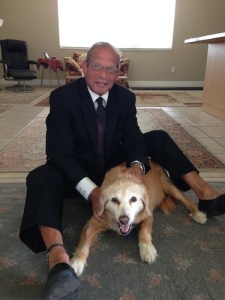 Barry Rudner has been an author/poet of self-esteem books for children for over thirty years, dealing with universal truths such as, reaching for your dreams, homelessness, undying friendships, disability awareness, always being yourself, autism awareness, hope and utter silliness. He firmly believes that we cannot educate our children unless they feel good about who they are; and ultimately, as they grow up, they will not feel good about themselves unless they educate themselves. Please feel free to visit us at our website at www.nickoftime.us.
Barry Rudner has been an author/poet of self-esteem books for children for over thirty years, dealing with universal truths such as, reaching for your dreams, homelessness, undying friendships, disability awareness, always being yourself, autism awareness, hope and utter silliness. He firmly believes that we cannot educate our children unless they feel good about who they are; and ultimately, as they grow up, they will not feel good about themselves unless they educate themselves. Please feel free to visit us at our website at www.nickoftime.us.
Thank you for joining us today, Barry Rudner. Can you please start off by telling us a bit about yourself?
I am a product of an incredible education from my parents. My formal education was a double major in biology and religious studies. I thought I wanted to grow up to become a doctor, but I realized I wanted to grow up and try to answer questions in ways that science cannot. But it is this hybrid of both degrees that gives me a certain insight into the world of children’s literature. In other words, as a scientist, I know the grass is green because the chlorophyl absorbs all the wavelengths of light and reflects the green. But as a children’s author, it is so much more poetic to think that the grass is green because it envies where the children have stepped.
When did you first get bit by the writing bug?
I was in graduate school in the late ’70s trying to earn a Masters degree in neuroanatomy in the hopes of being admitted into medical school. I was at a friend’s house, and he had a room mate who was taking a children’s literature course. On the kitchen table was Shel Silversteins, The Giving Tree. That one moment completely changed the path of my life.I knew that I would spend the rest of my life chasing after what I consider to be the most linear thought ever committed to paper for children. I have been pursuing this goal ever since.
Why did you decide to write stories for children?
I started writing stories for children because I love the way they think. If I may be so bold to quote Robert Burton, Anatomy of Melancholy, “…and such things commonly please us best which are most strange and come from farthest off.” And that in essence is our children. Somehow, in their innocence they understand things that we do not even mean. They are living, breathing allegories. Children are that very thing that “comes from farthest off”.
Do you believe it is harder to write books for a younger audience?
I believe that my life would be much harder if I did not write for children. I believe I understand my audience as well as my craft. Children’s literature is no different than taking a felled tree and stripping it of its bark and limbs and whittling it down to the size of a toothpick; and, right when you think you are done you split it in half. That is children’s literature.
What is your favorite part of writing for young people?
My favorite part about writing for children, especially thirty-two page picture books is to teach them universal truths without ever dealing with what is real. By definition, that is a fairy tale. Teaching them to reach for their dreams. Teaching them to be themselves. Teaching them to be aware of the less fortunate. The beauty of truth is that it is multi-cultural and I never have to deal with what is real: only with what is true.
 Can you tell us what your latest book is all about?
Can you tell us what your latest book is all about?
The latest book is entitled, Silent Voice, and it is a modern day allegory about autism awareness: that the only ought in autism is that we ought not ever give up trying to find the cause and cure. The majority of the world population is not even aware of the pandemic nature of this disorder. But the book is not about finger pointing or blame. It is about educating those who are simply unaware.
What inspired you to write it?
Last year in March I was speaking to a dear friend, Nicole Albert, a licensed therapist, who approached me about writing a book about the lack of awareness of those children that fall under the spectrum of autism: worldwide one in eighty-eight suffer from this disorder. It is a staggering number when you consider the statistics. I simply felt that it needed to be addressed. After three months of researching, I started the process of rewriting.
Where can readers purchase a copy?
Silent Voice can be purchased online at our website at http://www.nickoftime.us in a variety of electronic formats as well as a hardcover version of the book. Our hope is that the book version will become a part of bookshelves everywhere.
What is up next for you?
For an author, even a barely-an-author-type like myself, all that matters is to rewrite a book that is worthier than the one that proceeded it.
Do you have anything else to add?
It took almost eleven years to become published. For anyone aspiring to become an author, do not take rejection personally. Take it as a complement. It means your work is being circulated. You are looking for that one editor who is searching for that very manuscript you have written. Case in point: I once met the editor at a symposium who rejected Richard Bach’s, Jonathan Livingston Seagull, because their was no mass market appeal for it. Need I say more.
Thank you for spending time with us today, Barry Rudner. We wish you much success.


I am happy to be part of Barry Rudner's virtual book tour this month. To promote his book, SILENT VOICE, Barry is touring the blogosphere with The National Writing for Children Center. In this guest post, licensed psychotherapist Nicole L. Albert talks about Barry and his book. I hope you'll enjoy the post. Happy reading!
---------------------------
I am fortunate to be a long time friend of Barry Rudner. We met while vacationing in the Florida Keys more than two decades ago. It has been with enthusiasm and appreciation through the years that followed, to participate in his journey of children's literature. Each and every piece of his work, touched me in the deepest of ways. He addresses so many issues of what is typically never spoken aloud. With each piece of writing, he imparts messages of hope, each and every time, and attends to the struggle while opening the hearts of the reader.
I am a licensed board certified therapist and I work with children, adults and families struggling with a variety of life's issues. His writings touched a chord in me as I would think of people whose lives I came into contact with for a variety of reasons. I knew they would benefit from the insight and pure joy his books would provide.
A good proportion of my client base, are individuals with a wide array of Developmental Disabilities.
One day I called Barry to wish him a Happy Birthday - we exchanged some events of what we had both been doing of late, and I described to him some of the situations that I was challenged with, for individuals and families touched by Autism.
A couple weeks later, I received an email from him asking me to read something - the early drafts of Silent Voice. It was utterly staggering! He had accomplished to put into words, a world that many people know only too well and unfortunately way too few are aware of. Silent Voice was born, along with outstanding illustrations that completely depict the nature of this overwhelming and all consuming challenge.
I am so very proud, to have been part of this journey.
--------------------------------
Title: Silent Voice
Genre: Children's fiction, Family
Author: Barry Rudner
Website:
http://www.nickoftime.usPublisher: Nick of Time Media, Inc.
Purchase link:
http://www.nickoftime.us/hardcover-books.phpSUMMARY: A modern day allegory about autism awareness: that the only ought in autism is that we ought not ever give up. Ever.
Barry Rudner has been an author/poet of self-esteem books for children for over thirty years, dealing with universal truths such as, reaching for your dreams, homelessness, undying friendships, disability awareness, always being yourself, autism awareness, hope and utter silliness. He firmly believes that we cannot educate our children unless they feel good about who they are; and ultimately, as they grow up, they will not feel good about themselves unless they educate themselves.
Connect with Barry on the web:Facebook Page:
https://www.facebook.com/pages/Nick-of-Time-Media/507826792667344Twitter:
https://twitter.com/NickOfTimeMediaGoogle+:
https://plus.google.com/107827469685021155032/posts
By: Mark Myers,
on 4/10/2014
Blog:
(
Login to Add to MyJacketFlap)
JacketFlap tags:
children,
family,
Health,
Friendship,
hope,
love,
cancer,
parenting,
Christian,
Christianity,
Dad,
Encouragement,
fight,
Fatherhood,
daughters,
Religion and Spirituality,
Dad stuff,
Add a tag
Where were you when you first heard the sound? Good sounds – your husband’s voice, your baby’s giggle, the words “I love you?” Do you remember? Can you picture the scene and surroundings?
I experienced a condensed courtship with my wife because I was briefly called back to service during Desert Storm. I don’t recall the first expression of the four- letter L word in our relationship. I know it came, and stuck. I have said it to her every day for nearly twenty-two years. I say it every night to my girls and sometimes in front of other people, much to their chagrin.
I wish I remembered the first time I said it, though.
I will never forget the first time I heard the word Cancer as it related to my family. I was in the hospital just a week ago when it was introduced to me, while my little girl lay sleeping nearby. The doctor actually used the words “oncological event” before I made him dumb it down for me. Cancer.
I held my wife in my arms as she collapsed into a puddle. Doesn’t cancer affect other families? Why would he be saying this word? I felt an instant dislike for this man, but my mind clouded to nothing. My wife’s head heaved in my chest. I couldn’t think in more than three word bursts. I have no idea how long we stood that way. I was roused only by the sound of a man pushing a cart way down at the end of the hall. The wheel squeaked as he carried out his task and I remember thinking, “How can he be pushing that? Doesn’t he know? It doesn’t matter where that squeaky cart is! Why isn’t he stopping?”
It was then I realized this isn’t everyone’s diagnosis. It is Kylie’s and ours: our family’s, our friends and network of support. But the rest of the world will continue to march on around us.
I will add a link to Kylie’s Caring Bridge at the end of this post because I won’t allow cancer to dominate my writing. It will peak its evil head in from time to time, I have no doubt. But I won’t allow it to take over my life, steal my joy, soil my faith, or crush my little girl.
It took a while to determine the enemy. Until then, we’ve been punching at shadows. Now we start to take it out. We are at the beginning of a long road, but there is hope. Kylie knows what is going on, she is scared. We cried together and prayed. She has decided that this is happening because God must have a really big, great plan for her. I don’t know if I could have gotten to those words so quickly at twelve – she’s just chock-full of amazing.

The picture I added is one of Kylie as Annie in her school play a couple of years ago. She is an incredible actress and I can’t wait to see her on stage again.
Because our minds are reeling right now, the verse we’ve been holding onto is Romans 8:26
Likewise the Spirit also helps in our weaknesses. For we do not know what we should pray for as we ought, but the Spirit Himself makes intercession for us with groanings which cannot be uttered.
♦
Thank you for your prayers and words of encouragement, friends. I have to go now, the bell just sounded for round one…
http://www.caringbridge.org/visit/kyliemyers


Hope in gates, hope in spoons, hope in doors, hope in tables, no hope in daintiness and determination. Hope in dates.
- Gertrude Stein, from her piece called Food
View all posts tagged as Poetry Friday at Bildungsroman.
View the roundup schedule at A Year of Reading.
Learn more about Poetry Friday.
.png.jpg?picon=3765)
By:
Loni Edwards,
on 2/9/2014
Blog:
Loni Edwards Illustration
(
Login to Add to MyJacketFlap)
JacketFlap tags:
blog,
hope,
peace,
cancer,
art,
nature,
sun,
dragonfly,
water,
Add a tag
The wife of a friend of ours from high school recently lost her courageous battle with cancer. In her honor I post this piece that I was commissioned to create for a client who’s friend also died from cancer. Thank you, Mary E. for permission to share on my site. RIP Margo McCabe.

Dragonfly Pond, commissioned in the memory of Shawn Oligmeuller 2009.



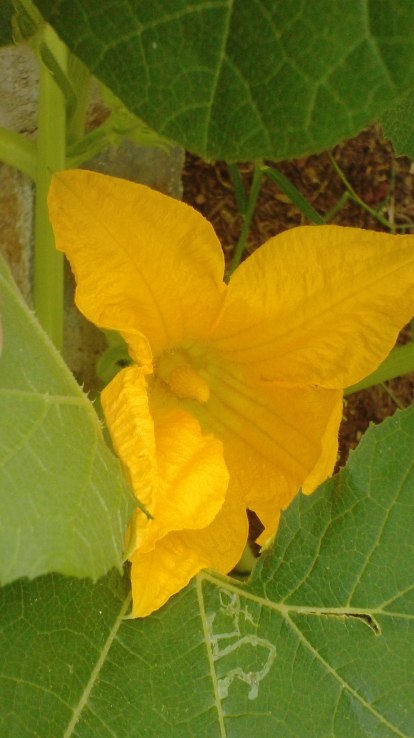
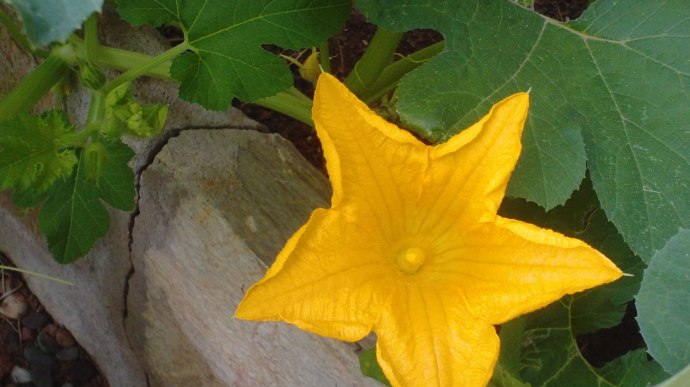

the pumpkin flowers are up


.jpeg?picon=3304)
By: Leslie Ann Clark,
on 7/15/2013
Blog:
Leslie Ann Clark's Skye Blue Blog
(
Login to Add to MyJacketFlap)
JacketFlap tags:
God STuff,
work,
hope,
imagination,
art,
ideas,
bloom,
Reflections,
dream,
self doubt,
Inspiring,
divine,
Kicking Around Thoughts,
sweet spot,
Add a tag
http://kellyraeroberts.com/flying-lessons

Artists live a life of wonder. At times, it’s wondering what to do next. I will not lie, I have been wondering this for the last few months. I am looking for the sweet spot! It’s my favorite place to be in Art. It’s the place where you are working and you don’t want to stop. I think it’s a divine place where God kisses your life with ideas that flow out in a steady stream.
A lot of things can bar you from this place. Looking in the wrong direction, self doubt, self pity, self self self. Ha! Get the point? You have to get rid of the”self” part. If the sweet spot is divine, then you have to seek out the divine.
A few nights ago I had a dream. My dad was in the dream. Someone had driven him to my house. He slowly came up the steps to my house and said to me, ” Bloom“. In a small whisper he said, “bloom where you are planted”.
Then he was gone.
I woke up knowing the “divine” had spoken to me.
No grinding out ideas, just let the divine IN me out… to make the art I was born to make.
A flower does not worry about the bloom. All the coding for that bloom is IN the seed. It simply drinks up moisture from above and the roots go down and the bloom comes.
So… BLOOM today! You were meant to be like none other.
Filed under:
dream,
God STuff,
Inspiring,
Kicking Around Thoughts,
Reflections 

Hi there. Long time no see. It’s me, not you. I’ve been slack.
But tonight I’m putting a hold on the smoothies I promised to make for D and myself, in order to write this post. So listen up. Because it’s important. And because smoothies are on the line!
Lately I’ve been feeling down in the dumps, and it’s not just because of my recent terrible haircut. It’s also because of a project I’ve been working on, which is not going quite where I want it to. It’s gotten so that the last few days I’ve been trying to think of a reason not to quit. Because somehow I got to this point where quitting doesn’t even feel like quitting. It just feels like not continuing, which doesn’t really sound as bad. Does that make sense? It does to me.
But I’ve put a lot of time and effort into this project. You always hear stories where people were so close to quitting when they finally met with success, so I thought, maybe that’s where I am. Maybe I should hang in there a bit longer. But what’s the point? I need a reason. A really rock-solid reason not to quit–something that will actually force me to keep going. Because this is kind of new for me. I don’t quit. Never. Not really. I’m not even bragging because honestly, sometimes it’s a curse. If I get it in my head to do something, then I JUST. WON’T. LET. IT. GO. So ordinarily what keeps me from giving up is that I can’t admit defeat. But this time that isn’t enough.
Because I kind of want to quit. I’ve turned it into something other than defeat. I’ve turned it into the realistic, responsible thing to do. It would save me a lot of grief (read: feeling depressed at my lack of success and guilty for doing anything besides working on my project). It would be easier.
So, while I was washing dishes tonight, the answer kind of came to me in the form of this blog post. (It seems like I always get half-decent ideas while I’m washing dishes. You might think that’s a good enough reason to wash dishes more often, but I’m still not sold.) Anyway, I was trying to think of one good reason not to quit and I realized it was actually pretty simple: If I quit, then I’ll definitely be in the exact same place that I am right now. Forever. My project can’t possibly succeed. And the disappoint that I feel right now will never go away–why would it? But if I don’t quit–if I keep on trying–then there remain two possibilities ahead of me: One is that I might never succeed. I might remain exactly where I am right now. Forever. With one exception: at least I would know I didn’t give up. But the other possibility is that I will eventually succeed. Until I eliminate that possibility, it’s still out there. It could still happen.
If I quit, then all I do is eliminate hope. I control the future by closing off all possibilities except the one I don’t want.
And hope is enough to keep me going. I wouldn’t condemn anyone to disappointment–I want all your dreams to come true. So why would I do any less for myself?
One of my college professors paraphrased Thomas Edison, and I’ll never forget it. At the time, I thought he made it up. I thought he was a genius. So I will always think of R.L. before poor T.E. when I hear the words, “Many of life’s failures are people who did not realize how close they were to success when they gave up.”
I guess what I’m saying is, don’t give up. I won’t if you don’t.
What keeps you going on your low days?
Tagged:
Being Brave,
Failure,
Fear,
Future,
Hope,
Persistence,
Thomas Edison 
By: portiadery,
on 6/12/2013
Blog:
(
Login to Add to MyJacketFlap)
JacketFlap tags:
life,
hope,
Love,
Faith,
Add a tag
A weary heart i carried
A battered heart i owned
A stonic look i gave
A broken spirit i carried
All, until your miracle smiled at me
And even when i heard the village women yell ”the storm is over. come out” i still did not believe it, for fear had created a comfortable home in my heart.
But you, you never gave up on me
But you ,you never stopped loving me
And now,even now i stand in awe…speechless,useless unable to think out
For what uttered thank-you(s) can demonstrate how grateful i am .


.jpeg?picon=3304)
By: Leslie Ann Clark,
on 5/18/2013
Blog:
Leslie Ann Clark's Skye Blue Blog
(
Login to Add to MyJacketFlap)
JacketFlap tags:
giant steps,
one step at a time,
why not? What's stopping you?,
hope,
future,
dream,
Inspiring,
brave,
now,
yes,
Kicking Around Thoughts,
do it,
Add a tag
I was sitting in the movie theater today, minding my own business, (and Captain Kirks!), when all of the sudden three words came to me. “Change Your Destiny”. I was so surprised that I dug down into my purse ( the black hole), looking for my notebook so i might them down.
Along with the words came a sudden rush of hope and direction for my future. Instead of watching the Star Trek movie I began thinking of things I could turn around in my life that would mean a different future, even 3 months from now.
How many times in our lives do we stay the course because it is easy or familiar? What would happen if we chose three things in each day, and purposed in our hearts to do them differently? Perhaps that wild mean venturing out to see a neighbor you hadn’t seen in a while? Or put down that cheese sandwich and opt for a salad? Why not carve out an hour of the day to work on your novel or write a letter to a relative? Maybe it’s time you tackle your To Do List?
I will think out loud here and list some different areas of interest to me.
God
Family
Friends
Job
Exercise
Diet
Home front
Hobbies
Inspiration
Gardening
Under each heading could be multiple topics.
Imagine if you took a new course of action for each heading, each day. How might that change your life by this time next year? Just think! You could come to the end of the year a new person. Or perhaps you might become the person you were meant to be? What area might you work on this week?
Heaven! The final frontier! But what will you do before that??? I LOVE the thought of CHA CHA CHANGE!!!
Are you with me?
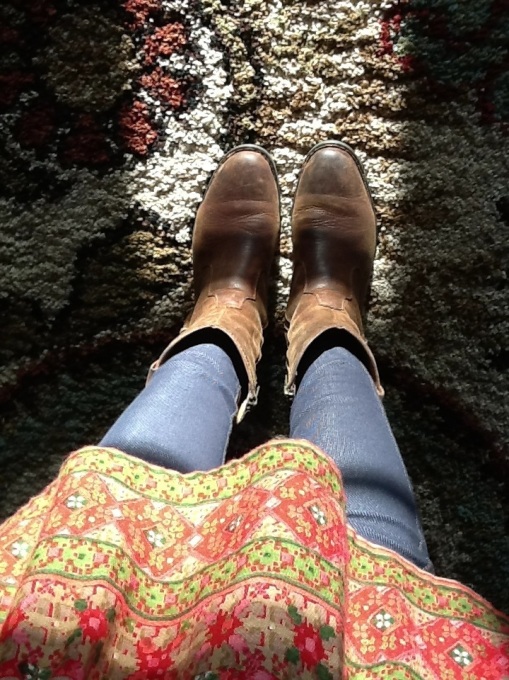
Filed under:
Inspiring,
Kicking Around Thoughts 

By: David D Bernstein,
on 4/7/2013
Blog:
Children's Books, and Other Cool Stuff
(
Login to Add to MyJacketFlap)
JacketFlap tags:
magic,
family,
Fun,
History,
hope,
Great books,
illustrated,
love,
fairy tales,
fantasy,
boys,
dragons,
time travel,
elves,
middle readers,
Add a tag
Middle Grade Books

1)
“Children of the Lamp (The Akhanaten Adventure)- by P.B Kerr, published by “Orchard books, and imprint of scholastic Inc.
New York 2004.
What if you find out that you are descendants from a long line of Dijon, human-like beings created from fire.
They are able to grant wishes, and take on different animal forms.
This is exactly what happens to two twelve-year-old twins, John and Phillippa, after they get their wisdom teeth pulled.
The children are sent to London to their Uncle Nimrod's home where their amazing adventure begins. This venture takes the reader on a magic carpet ride through a fantasy Middle Eastern World.
This journey teaches the twins that granting wishes is not only dangerous for themselves, but for people who desire wishes as well.

2)
“Peter and Star Catchers”-Written
by Dave Barry and Ridley Pearson, illustrated by Greg Call.
Published by Disney Hyperion paperbacks for children New York 2004.
How was never-land discovered?
How did Peter Pan become a boy forever?
This book helps the reader find answers to those questions and many more.
Peter Pan is a never aging boy, who visits children at night and takes them to fantasy island called Never-Land where magic lives.
Through the use of vivid language and pencil illustrations, the authors introduce us to how Peter Pan became a part of a world, full of amazing creatures, and magic. This story reveals the mystery of magic dust and how Children can make it real by looking within and tapping into their own imagination.

3)
“Infinity Ring book three the trapdoor”- written by Lisa McMann, published by Scholastic Inc.
New York 2013.
The next book in this interactive serious takes our heroes Dak, Sera and Riq to Maryland in 1850 just before the Civil War.
The main character in this book travel back it time and fix History Breaks, that has been caused by an evil corporation with intentions to take over the world.
The time period in this book describes how new law has been passed that allows any white American to report free blacks, and then make them slaves. The children's mission is to stop this law, and to save the civil right leaders from a prison Dream like landscapes, humor and adventure take the seriousness of the topic at hand, and twists it into a fun read for everyone.
4)
“The 13thReality, the Journal of curious letters. - Written by James Dashner, illustrated by Bryan Beus, Published by Shadow Mountain Press an imprint of Worzalla Publishing Co.
Stevens point, WI. 2008. One day a nerdy boy, Atticus Higginbottom receives a strange letter from Alaska.
After this boy’s life changes from a boring one to life full of mystery and questions that, need to be answered.
Twelve clues help him understand that the world he lives in is just one of many parallel worlds, which still need to be discovered and saved.
If a child likes to solve problems through clues, they would love this book.
A story progresses Atticus goes from zero to hero.
The pencil illustrations and secrets surrounding the boy’s life will keep your middle graders turning the pages.
.jpeg?picon=2982)
By: Caroline Starr Rose,
on 2/20/2013
Blog:
Caroline by line
(
Login to Add to MyJacketFlap)
JacketFlap tags:
Augusta Scattergood,
chasing your dreams,
links,
writing advice,
hope,
the writing life,
authors,
writing,
publication,
Lisa Schroeder,
Add a tag

By: Alice,
on 1/24/2013
Blog:
OUPblog
(
Login to Add to MyJacketFlap)
JacketFlap tags:
hope,
Psychology,
new year's resolution,
oblivion,
existentialism,
*Featured,
anthony scioli,
hope in the age of anxiety,
Harold Kushner,
Science & Medicine,
Rollo May,
Viktor Frankl,
deathbed regrets,
Add a tag
By Anthony Scioli
From late December to the middle of January it is obligatory for people to make one or more New Years’ resolutions. Recent surveys reveal that the most common resolutions made by Americans include losing weight, getting fit, quitting smoking, quitting drinking, reducing debt, or getting organized. This list dovetails perfectly (unfortunately) with an international study of 24 character strengths which revealed that Americans rate themselves lowest in the virtue of “self-regulation”.
Ironically the other leading American resolutions involving getting or doing more rather than having or doing less. Americans want more socializing, more joy, and more learning. We want less and we want more. Should anyone be surprised that resolutions often fail to bring about lasting change?
Less than a handful of psychological studies have been done on New Years’ resolutions. There is scant advice in the database for the layperson to glean except that resolutions are more likely to be successful if an individual is more motivated and a goal is perceived as more important. This is not very helpful “self-help”.
As a psychologist, I would suggest that instead of a piecemeal focus on narrow goals that is bound to fail, people should aim for a higher horizon, a commitment to a more hopeful way of life.
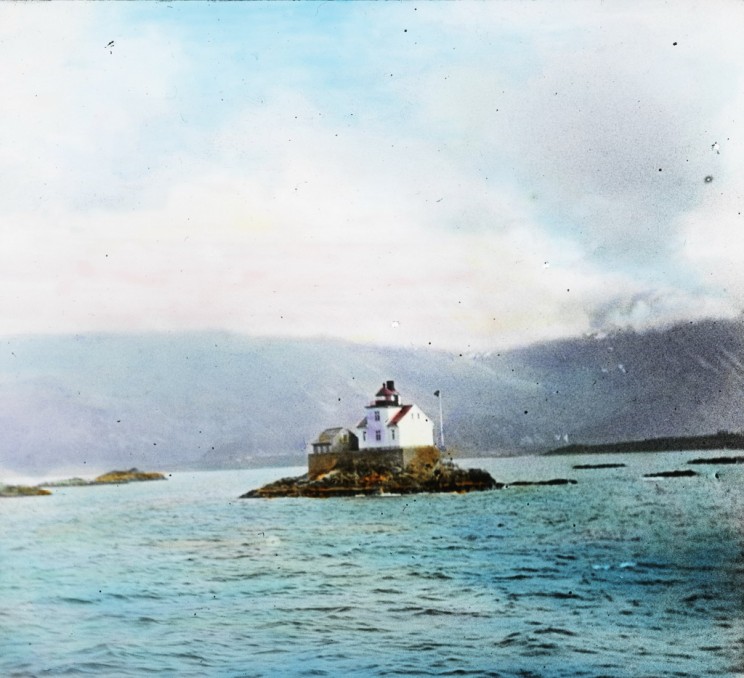
Lighthouse. Photo by Fylkesarkivet i Sogn og Fjordane. Creative Commons License.
Deep below the surface of many desperate resolutions reside the most primitive fears. The dramatic turn of the calendar on December 31st is a reminder of finitude on many levels, most poignantly, the fact that an individual has one less year. In the northern hemisphere this reminder comes when the nights are long and wind blows hard and cold. However, regardless of where one lives, a different freeze may be felt, what the existentialists call an “ego chill”, the sudden and full awareness that one day you will cease to exist.
The projected fears of the New Year are the same as the deathbed regrets of the dying. They are the twin fears of a self-aware being. “Did I live to my life to the fullest?” Have I have left a mark on the world?”
There is a strong need to feel that one did not leave too much unlived life “on the table”. Emerson put it this way:
“Our fear of death is like our fear that summer will be short, but when we have had our swing of pleasure, our fill of fruit, and our swelter of heat, we say we have had our day”.
Human beings also fear the specter of oblivion. Aristotle went so far as to coin the term entelechy to refer to an essential momentum within all living things to continue to be or exist, without end, in one form or another. I believe that we all have some form of entelechy etched into our DNA.
In Living A Life That Matters, Rabbi Harold Kushner wrote, “In my forty years as a rabbi, I have tended to many people in the last moments of their lives…The people who had the most trouble with death were those who felt that they had never done anything worthwhile in their lives, and if God would only give them another two or three years, maybe they would finally get it right. It was not death that frightened them; it was insignificance, the fear that they would die and leave no mark on the world.”
The answer to this existential dilemma is to live a double-life. You should balance being anchored in the here and now with investments focused on a more transcendent plane. The scientific psychology of the 20th century focused more and more on the here and now. The most obvious, and in my view, overrated example of this is the concept of “mindfulness”. At best, mindfulness, or an intentional, nonjudgmental awareness of the present is a corrective Eastern strategy for the distracted and hurried mind of the West. It is not a full program for living. Not only is it impractical to live just for the present but such a philosophy does not match up with the architecture of the brain which is dominated by the frontal lobes and other structures designed for projecting into the future or preserving the past. Human beings were meant to live in 3D, the past, present, and future.
In contrast, the American psychology of the 19th century was initially influenced by “moral philosophy”. From about 1850 to 1890, it was not uncommon for psychologists to focus on more transcendent issues such as character, values, religion, or coping with death. In the 21st century we need a more integrated philosophy.
Living a “Double – Life”
There is an old adage that “where there is life there is hope”. I would turn this around. I believe where there is hope, there is life. I understand hope as a composite of four basic needs: attachment (trust and openness), mastery (purpose and collaboration), survival (self-regulation and liberation), and spirituality (empowerment, connection, and salvation linked to a larger perceived force or entity). If you want to live more fully in the here and now while also investing in something more enduring, commit in 2013 to a life that includes more time for building and nurturing relationships, for articulating a mission in life, for increasing your perceived degrees of freedom, and for spiritual fulfillment. You will not only feel happier on a daily basis, but you will be far more likely to build an enduring legacy. Towards this end, I offer eight recommendations, two each for the four cardinal elements of hope (one for the left brain and one for the right brain).
Attachment
Attachments may be the most significant sources of hope. Note that even the perennial classics of the holiday season such as A Christmas Carol, It’s a Wonderful Life, and the Auld Lang Syne song (Should Old Acquaintance be forgot, and never thought upon?) all deal with the primacy of relationships.
For left brain attachment read Thornton Wilder’s The Bridge of San Luis Rey. For your right brain, follow this up with a live viewing of his play, Our Town. If you are seeking inspiration to nurture your relationships, it is difficult to find two better sources.
Mastery
Six months before his assassination, Martin Luther King Spoke about mastery to a group of Junior High School Students in Philadelphia.
“If it is your lot to be a street sweeper, sweep streets like Michelangelo painted pictures, sweep streets like Beethoven composed music, sweep streets like Leontyne Price sings before the Metropolitan Opera. Sweep streets like Shakespeare wrote poetry. Sweep streets so well that all the hosts of heaven and earth will have to pause and say: Here lived a great street sweeper who swept his job well.”
For left brain mastery, go to the positive psychology website at the University of Pennsylvania and take their VIA Survey of Character Strengths. Find out what your top five strengths are and find ways to craft your life around these virtues. For right brain mastery, listen to Martin Luther King’s “I have a dream” speech.
Click here to view the embedded video.
Survival
Survival hope is strongly infused with a sense of liberation. In contrast, the most common experience in hopelessness is a sense of entrapment. The psychologist Rollo May contrasted freedom of doing with freedom of being. To maximize your freedom of doing, May suggested making the most of your potential or taking advantage of various forms of fate or destiny such as your genetics or time and place of birth. He also noted that when your freedom of doing is restricted, as a human being, you always have the freedom to be, to adopt a particular attitude.
For left brain survival hope, I would read Man’s Search for Meaning by Viktor Frankl. As a psychiatrist who survived the Nazi concentration camps, Frankl describes how he found hope by maximizing both types of freedom. For right brain survival hope I would follow Frankl with a viewing (or re-viewing) of the film Life is Beautiful.
Spirituality
For left brain spiritual development reflect on your spiritual type. Spiritual needs and passions will flow from your particular type. Are you a mystic seeking a sense of oneness? Are you a follower seeking structure? Are you an independent seeking support for a chosen path? Are you a collaborator looking to join forces with a powerful other? Are you a sufferer who seeks comfort? Are you a reformer seeking justice? For right brain spiritual development, I would review your list of favorite songs and find one or two that match up with your spiritual type and play them often in 2013. You can find music consistent with your particular religious affiliation that will nevertheless address your particular spiritual type. Here are six suggestions: For independent types: the Chariots of Fire theme; for followers, “Amazing Grace”; for collaborators, “Lord of the Dance”; for mystics, “Unchained Melody”; for sufferers, “Let It Be” (the Beatles); for reformers, “A Change is Gonna Come” (Sam Cooke).
Anthony Scioli is Professor of Clinical Psychology at Keene State College. He is the co-author of Hope in the Age of Anxiety with Henry Biller. Dr. Scioli completed Harvard fellowships in human motivation and behavioral medicine. He co-authored the chapter on emotion for the Encyclopedia of Mental Health and currently serves on the editorial boards of the Journal of Positive Psychology and the Psychology of Religion and Spirituality. Read his previous blog articles: “Why spring is the season of hope” and “Contrasting profiles in hope.”
Subscribe to the OUPblog via email or RSS.
Subscribe to only psychology articles on the OUPblog via email or RSS.
The post A better New Year’s resolution: commit to hope appeared first on OUPblog.

I have always loved the winter solstice. There is that sense of being at the bottom of the curve - the sine curve representing the rate of change of day length. This day (and its summer partner) are the times at which the curve flattens, when the rate of change is at it slowest. When nature stops, or so it feels at this end of the year, and gives us time to contemplate.
This Friday 21st December is a special day, too, on the Mayan calendar. I've just been reading about the Mayans and it seems they knew a fair bit about mathematics and made astronomical observations that were way ahead of their time. Not that we have any need to fear. Scientists assure us that there is no truth in the idea that some unusual planetary alignment or asteroid collision will bring the world to an end today - though I can't say I'm enormously relieved to hear this. Humankind is still more than capable of bringing civilisation to an end - and we have already caused the extinction of many species, with more, no doubt, to follow. We are also, in some sad cases, willing to bring an end to innocent young human lives. I heard children singing Away in a Manger at a carol service in Peasholm Park, Scarborough, last weekend, and could not hold back my tears, thinking of those poor murdered children and their families in Connecticut.
It's been, for some, a dark, dark year. Many families, even in the relatively prosperous UK, are feeling the pain of increased energy, food and petrol bills, with large numbers out of work or earning barely enough to get by. In many countries, the situation is far worse. It's difficult to feel the hope in the Christmas message of goodwill to all people. It's difficult to go on believing, sometimes, in anything good at all.
Yet new buds are already forming on the trees. Nature struggles on, in spite of pollution, disease and climate change. People struggle on, because they have to. They do it for the sake of their children, their spouses, their parents and their friends.
Life has not been easy for many writers this year. I'm one of those who has had disappointing news from a publisher. I know that, on the overall scale of things, this is small beer. But it hurts, and I know many fellow writers who are hurting, too. School visits and other events have been severely cut back, because of lack of funding, and those writers who depend on these things to supplement their income are feeling the pinch. Advances have, by all accounts, almost disappeared for the bulk of writers. E-books are doing well in general and some authors are making a fortune, but many have failed to find the sales they hoped for.
It's difficult for readers, too. Libraries have closed or are threatened with closure. The big publishers seem mainly interested in blockbusters and celebrity memoirs and recipes. The supermarkets rule the sales and, where they go, the booksellers must follow. Lots of small, interesting, independent bookshops can no longer afford to carry on.Meanwhile, small children like two-year-old Jacob, my partner's grandson, adore books. So does his one-year-old sister, Ava. They know nothing of the troubles in the world of writing, but they know what they like. There are wonderful new children's books, everywhere I look. And there are children's authors, slaving away, inspired, inspiring and inspirational - creating words (and objects) of wonder for the new generation to learn to love.And while all that is happening, I have hope.Please, fellow children's authors, don't stop. Jacob, Ava and all the others can't wait to get their chubby, sticky little hands on your latest work. Remember that... as you read the latest disappointing or infuriating email from your agent or publisher. Times are hard but our children need you, more than ever. They need voices of sanity, sense and sensibility in this crazy world. Whatever happens in the cold out there, please go on creating your warm, sunlit little places where life truly begins. Don't, whatever you do, even think of stopping. The world, which will almost certainly still be here on the 22nd December and for a while beyond that, needs you, your vision, your pictures and your words.
Happy writing, and may the sun shine on your efforts as, according to the Mayans, the new age begins.My blogMy websiteMy Facebook author pageFollow me on Twitter @Ros_Warren

Filed under:
autumn,
love,
stars 
How do you feel about middle-grade novels that deal with life's harsh realities? My novel, May B., focuses on a child who has been abandoned, who faces starvation and possible death. Several young readers have confessed parts of it are scary. I'm okay with that. What I'm not okay with, though, is leaving my readers in a place of despair.
Here's a quote from the amazing Katherine Paterson on just this topic:
I cannot, will not, withhold from my young readers the harsh realities of human hunger and suffering and loss, but neither will I neglect to plant that stubborn seed of hope that has enabled our race to outlast wars and famines and the destruction of death. If you think that this is the limitation that will keep me forever a writer for the young, perhaps it is. I don’t mind. I do what I can and do it joyfully.”
-Katherine Paterson, A SENSE OF WONDER: ON READING AND WRITING BOOKS FOR CHILDREN
I love Ms. Paterson's idea of a "stubborn seed of hope", something that grows beyond painful circumstances, something that can anchor both the character and reader in a better future to come.
Do you shy away from heartache in the books you read or write? Why or why not?
By:
KidLitReviews,
on 9/13/2012
Blog:
Kid Lit Reviews
(
Login to Add to MyJacketFlap)
JacketFlap tags:
death,
loss,
4stars,
Library Donated Books,
stillborn,
unborn child,
Children's Books,
family,
friendship,
hope,
relationships,
Add a tag

4 Stars
Farfalla: A Story of Loss and Hope
Vanita Oelschlager
Vanita Books
978-0-9832904-0-7
No. Pages: 42 Ages: 4 to 8
From Publisher’s Website: Farfalla (the Italian word for “butterfly”) is a unique look at the death of an unborn child. The story is told from the perspective of young Beetle who, with his mother, meets a crowd of caterpillars in the garden they all frequent. Soon they become friends and he watches in awe as the caterpillars weave themselves into cocoons. A special one catches his attention and Beetle “adopts” it by making all sorts of plans of what they will do together when it hatches.
. . . . . . .
Little Beetle meets a caterpillar and they play together in the garden. Then one day, the caterpillar is not around and Little Beetle  cannot find him. Little Beetle is upset until his mother has him look up toward the sky. There in the trees are cocoons. Mother Beetle explains to her son how the caterpillars will soon become butterflies. Little Beetle patiently waits for the butterflies to emerge.
cannot find him. Little Beetle is upset until his mother has him look up toward the sky. There in the trees are cocoons. Mother Beetle explains to her son how the caterpillars will soon become butterflies. Little Beetle patiently waits for the butterflies to emerge.
While Little Beetle waits, he sees one cocoon and decides to adopt it. While waiting for his new friend to open into a butterfly, Little Beetle tells the cocoon what fun they will have. Soon the butterflies begin to emerge from their cocoons—but not Little Beetle’s adopted friend. Little Beetle checks each day to see if the cocoon has blossomed into a butterfly. He has named the still unborn butterfly Farfalla. All the cocoons have opened except Farfalla. She has died. Mother Beetle explains death to her son, telling him that Farfalla has gone.
. . . . . . . .Butterflies that are not not born go to live
. . . . . . . .with all the other butterflies who die and
. . . . . . . . fly up in the sky with the stars and the moon
Farfalla is a sensitive story about a delicate situation—the death of an unborn child. I like the use of cocoons and butterflies as “the  baby in mommy’s tummy.” With the cocoon, the child can see the caterpillar lying in his cocoon. The unborn butterfly goes up to the stars and the moon; unborn children go up into the sky to heaven. This is a wonderful way to make this subject accessible for the youngest minds.
baby in mommy’s tummy.” With the cocoon, the child can see the caterpillar lying in his cocoon. The unborn butterfly goes up to the stars and the moon; unborn children go up into the sky to heaven. This is a wonderful way to make this subject accessible for the youngest minds.
The illustrations are beautiful, with oversized objects, and color from edge to edge. The pages are lively, until the cocoon has died. At this point, the illustrations become darker, as if night has fallen. I think the black background represents Little Beetle’s grief and confusion. Once he says goodbye to Farfalla, who waves from high in the sky, the background returns to the bright blue of the clear sky. Little Beetle has accepted Farfalla’s death.
Children excitedly await the birth of a new brother or sister and then, for whatever reason, the baby does not survive birth. Young children often do not have the ability to understand the concept of death—of someone leaving and never, ever returning. Three, four and five-year-old children do not see death as a permanent state of being.
Cartoons help reinforce the idea of non-permanence of death when the character “dies” in one episode, only to come back to “life” in the next, or even the same, cartoon. The Tom and Jerry cartoons and the Roadrunner and  Coyote are good examples of cartoons that reinforce children’s idea of death as temporary.
Coyote are good examples of cartoons that reinforce children’s idea of death as temporary.
Toddlers understand that something is “all gone,” such as their dinner. Yet, that dinner returns each night. Not until age ten, do most kids firmly grasp that death is permanent and can happen to anyone. Farfalla helps parents talk to their young children about the death of not only an unborn child, which is the intent of the author, but also the death of anyone, or anything.
Vanita Books tend to have messages but they are not preachy in any way. Vanita Books tell great stories that are fun and lively. Children will love and treasure these books, and Farfalla is no exception. The illustrations in Vanita Books are gorgeous and interestng. They capture the mood of the story.
Farfalla is a sensitive story with profound meaning. I recommend this to anyone who must explain death to a young child. While the cocoon represents a child in the womb, Farfalla can help explain any death to a young child. The main thing for a child to take away is the person, or pet, went to heaven and are happy there, just as Farfalla is with the stars and the moon, happily looking down upon Little Beetle.
Author: Vanita Oelschlager website
Illustrator: Kristin Blackwood website blog
Publisher: Vanita Books website
Release Date: September 1, 2012
ISBN: 978-0-9832904-0-7 (hardback)
Ooooo 978-0-9832904-3-8 (paperback)
Number of Pages: 42
Ages: 4 to 8
. . . . . . . . .

Filed under:
4stars,
Children's Books,
Library Donated Books Tagged:
children's books,
death,
family,
friendship,
hope,
loss,
relationships,
stillborn,
unborn child 






By:
KidLitReviews,
on 7/19/2012
Blog:
Kid Lit Reviews
(
Login to Add to MyJacketFlap)
JacketFlap tags:
sacrifice,
pit bulls,
split families,
courage,
hope,
love,
Middle Grade,
dogs,
bullies,
puppies,
violence,
dog fighting,
animal abuse,
middle grade book,
betting,
5stars,
4stars,
Library Donated Books,
Fast Friday Read,
family violence,
Add a tag
4.5 Stars Back Cover: Being mean ain’t in nobody’s blood. Reckon folks will argue that one until there’s no more moonshine on the mountains. But in Freedom Pen that’s what Sarah the Twerp believes. And soon she and her brother, Billy, are setting out on a courageous summertime adventure to free two pit bull pups [...]
Since I’m a horror writer, at least a member of the association, you might think I have something to say about monsters. But these monsters, the ones I want to talk about, are metaphoric.
Plenty of monsters have walked through my life. The cancer which took my father, the self-doubt which played havoc with my twenty-something brain when my first fiancée left me stranded in Lawrence with only a handful of acquaintances and an apartment with no water… Aimee’s illness and death.
I’ve always thought it took bravery and courage to slay monsters. I’ve heard those words a lot since the article was published. Brave and courageous are not adjectives I’d ever use for myself—I’m just slaying the monsters the only way I know how.
Here’s the first trick: you have to look at the monster. You can’t turn away, or run, or hide. It may seem like I’m speaking of courage, but really—really—the monster weakens with your gaze on it. The courage only needs to come one time, the first time, and each subsequent time a monster rears its shaggy head, it’s not as big as the first. It’s not as scary. Just look at it. Acknowledge it. Accept it for what it is: cancer… mental illness... death.
I’m not a grief counselor or an expert, but I’m an expert on me. What I know, what I know as well as my own name, is Aimee’s illness—all of the ups and downs over the last eight years—was a monster. It was a monster full of teeth with black eyes full of malice. Opening up in the article, sharing our story, helped drive a big ol’ metaphoric sword into that monster’s gullet.
I cut my monster-slaying teeth as a boy, watching my father slowly deteriorate while cancer and radiation treatment nibbled away. It was a hard lesson for an elementary school kid, but I’ve become the man I am because I stared it down and learned how weak it really was. The monster didn’t own me.
Here’s the other trick, the one which makes looking at the monster the first time easier: you have to have hope. Understand this special kind of hope, a kind of hope born of love and patience. I knew my father wasn’t going to “get better.” But hope—hope for my life, and the lesson I learned about mortality—shaped me as a boy.
Life is short. Live it. Realize that the monsters don’t own us.
The day I asked Aimee to marry me, I thought I heard my father’s voice. “Just do it, boy.” I’ve never shared that with anyone. “Just do it, boy.” I don’t know why it came out as a Nike ad, but…
That’s how you slay the monsters. Just do it.
Life is short. Live it.
Every heroic tale takes a trip through the underworld (at least metaphorically). There, the hero gains what he/she needs to slay the monsters/accomplish his/her task. My weapon of choice? Hope.
Life is short. Live it with hope and love and patience. Just do it.
In the crazy world
Anything can happen
If you will it to
I'm just a hazy girl
Blurring all the edges
Only seeing blue
It's a wild hope
A wild hope
A wild hope
Everything will be alright
Lost inside
A painting of a city on a hotel wall
Days goes by
Wasting golden hours in the fall
It's a wild hope
A wild hope
A wild hope
Everything will be alright
I catch a glimpse of our reflection
Beside you I see myself
We are the season's new collection
We look like everybody else
Walk alone
Through the crowded streets into the fading Grey
Here and gone
Like a decoration for the holiday
It's a wild hope
A wild hope
A wild hope
Everything will be alright
- lyrics to Wild Hope by Mandy Moore
Hope means so much to me. I encourage you all to really listen to the first verse and the chorus of this song.
View all posts tagged as Poetry Friday at Bildungsroman.
View the roundup schedule at A Year of Reading.
Learn more about Poetry Friday.
I'm not a huge Emily Dickinson fan, but I do like image from "Hope is the Thing with Feathers"--hope brought to life as a bird. Hope is also an action, something we, as humans, can do. Something we should do.
In graduate school, I was fortunate enough to enroll in a course titled "Positive Psychology". The first lesson: most of the historical study of psychology has been focused on finding what's wrong with a person rather than what is right. Positive psychology turns the focus to what is right with a person--protective factors and strengths one might possess, just as a physically healthy person might be able to run several miles or compete at a high level in a given sport. Everyone has strengths and weaknesses--positive psychology attempts to recognize strengths. Hope is one of those strengths.
Research studies have shown hope can help you lead a healthy, fulfilled life. Hopeful college students are more likely to obtain degrees. Hopeful public school students are more likely to score high marks and graduate at the top of their classes. I didn't need a class to explain what I knew at the core of my being--hope can pull you through some hard times.
Hope consists of agency and pathways, the willpower and the waypower to make something happen. Hopeful people have the energy--agency--and can find ways--pathways--to make their dreams real.
Aimee's death has knocked me down, hard. Once, I hoped for a family and a long, happy life with the vibrant young woman I met in front of the post office. When Aimee was sick, that same hope pulled me through, helped me do what I could to take care of her. She lived life with hope--hope for me, for the boys, for her friends and family. I'd like to think she never gave up hope. I proud of the way we fought together, and no illness can tarnish my cherished memories.
I'm slowly building hope again--hope for my boys, our future, our family, my future... Things I never imagined putting together without Aimee. I also have hope for her legacy and memory. She spread so much hope and love, it can't help but continue.
Hope is a special kind of inoculation; it can't take away Aimee's death or her illness, but it can help with the way forward. I know Aimee would want us all to continue with as much hope as we can muster.

By: Alice,
on 3/20/2012
Blog:
OUPblog
(
Login to Add to MyJacketFlap)
JacketFlap tags:
Spring,
Psychology,
light,
healing,
heat,
haven,
*Featured,
anthony scioli,
hope in the age of anxiety,
harbor,
Science & Medicine,
birdge,
hope,
Add a tag
By Anthony Scioli
Spring and hope are intertwined in the mind, body, and soul. In spring, nature conspires with biology and psychology to spark the basic needs that underlie hope: attachment, mastery, survival, and spirituality. It is true that hope doesn’t melt away in the summer; it isn’t rendered fallow in autumn nor does it perish in the deep freeze of winter. But none of these other seasons can match the bounty of hope that greets us in the spring. My reflections on hope and the spring season are cast in terms of metaphors.
Mind Metaphors
More than three decades ago, linguist George Lakoff and philosopher Mark Johnson demonstrated how metaphors can reveal the inner structure of private feelings. For example, when we refer to “high hopes,” we are revealing something about the phenomenology of the hope experience, that it is “buoyant,” “uplifting,” even “energizing.”
Metaphors of Hope
My research as well as that of psychologists Shlomo Breznitz and James Averill has identified a number of hope metaphors. Below are the four most striking examples.
Light and Heat
Hope has been compared to light and heat. Karl Menninger called hope the “indispensable flame” of mental health. English writer Martin F. Tupper wrote, “though the breath of disappointment should chill the sanguine heart, speedily it glows again, warmed by the live embers of hope.”
Spring also brings added light and heat, sometimes so suddenly that we speak of a virtual “spring fever.” The first day of spring marks the vernal equinox, a balance of daylight and darkness. In the Northern Hemisphere this amounts to an average increase of three hours of light since the winter solstice, roughly a 20% gain. With increased light come a host of direct and indirect effects that improve mood and engender hope. Most directly, increased serotonin is produced. Serotonin is a major excitatory neurotransmitter in the nervous system, and the target of many antidepressant drugs. Among the indirect effects of spring on mood are increased exercise, and the physically related but psychologically distinct activities of gardening and farming.
Like spring, hope is also a 50-50 proposition. If our odds of achieving a particular outcome fall to less than fifty percent, we tend towards “despair.” If we are more than fifty percent certain of an outcome, we become “optimistic.” When psychologist James Averill and his colleagues surveyed individuals about their chances of realizing various hopes, the average response was fifty percent. For this reason, I believe that some kind of faith, not necessarily the religious type, but something essentially “spiritual,” must be present to ground our hopes.

Valley Green Bridge on the Wissahickon, Philadelphia, Pa. Detroit Publishing Company postcards. Source: NYPL.
A Bridge
Hope has been likened to a bridge that can actively transport the individual from darkness to light, from entrapment to liberation, from evil to salvation.
0 Comments on Why spring is the season of hope as of 1/1/1900
 Barry Rudner has been an author/poet of self-esteem books for children for over thirty years, dealing with universal truths such as, reaching for your dreams, homelessness, undying friendships, disability awareness, always being yourself, autism awareness, hope and utter silliness. He firmly believes that we cannot educate our children unless they feel good about who they are; and ultimately, as they grow up, they will not feel good about themselves unless they educate themselves. Please feel free to visit us at our website at www.nickoftime.us.
Barry Rudner has been an author/poet of self-esteem books for children for over thirty years, dealing with universal truths such as, reaching for your dreams, homelessness, undying friendships, disability awareness, always being yourself, autism awareness, hope and utter silliness. He firmly believes that we cannot educate our children unless they feel good about who they are; and ultimately, as they grow up, they will not feel good about themselves unless they educate themselves. Please feel free to visit us at our website at www.nickoftime.us. Can you tell us what your latest book is all about?
Can you tell us what your latest book is all about?


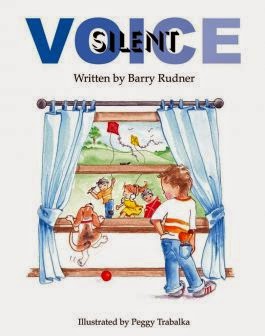




























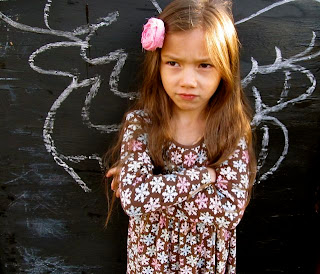




[…] Interview on The Children’s and Teen’s Book Connection […]